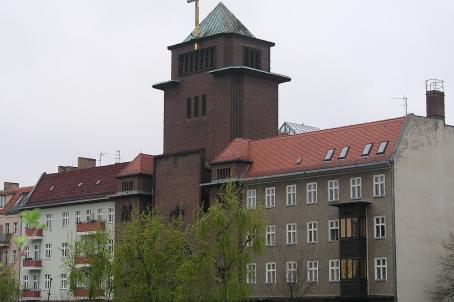Gethsemanekirche

The Gethsemane Church was built between 1891 and 1893 according to the plans of the architect August Orth and inaugurated in 1893 by Kaiser Wilhelm II. In terms of style, August Orth combined neo-Romanesque elements, such as round-headed windows, with Baltic Gothic elements, such as rose windows or cross arches, and above all the use of brick as a material. The church was named after the Garden of Gethsemane at the foot of the Mount of Olives in Jerusalem. Christians venerate this place where the twelve apostles and Jesus of Nazareth prayed the night before his crucifixion and where he was arrested.





